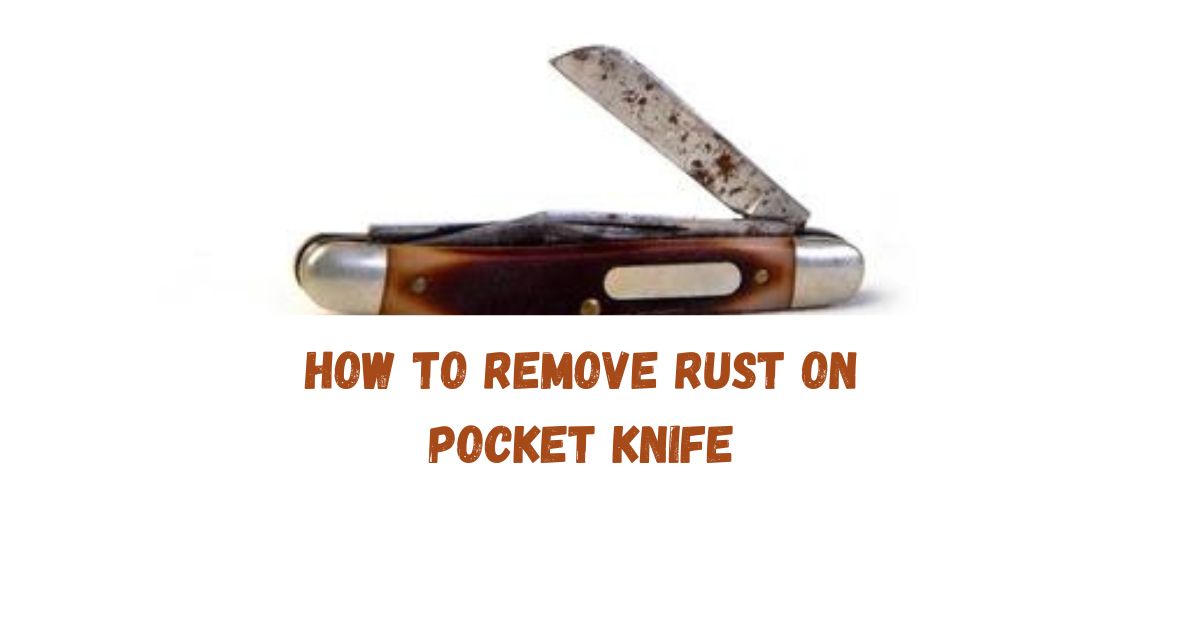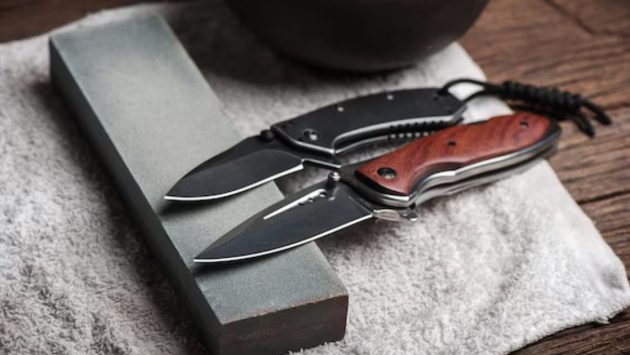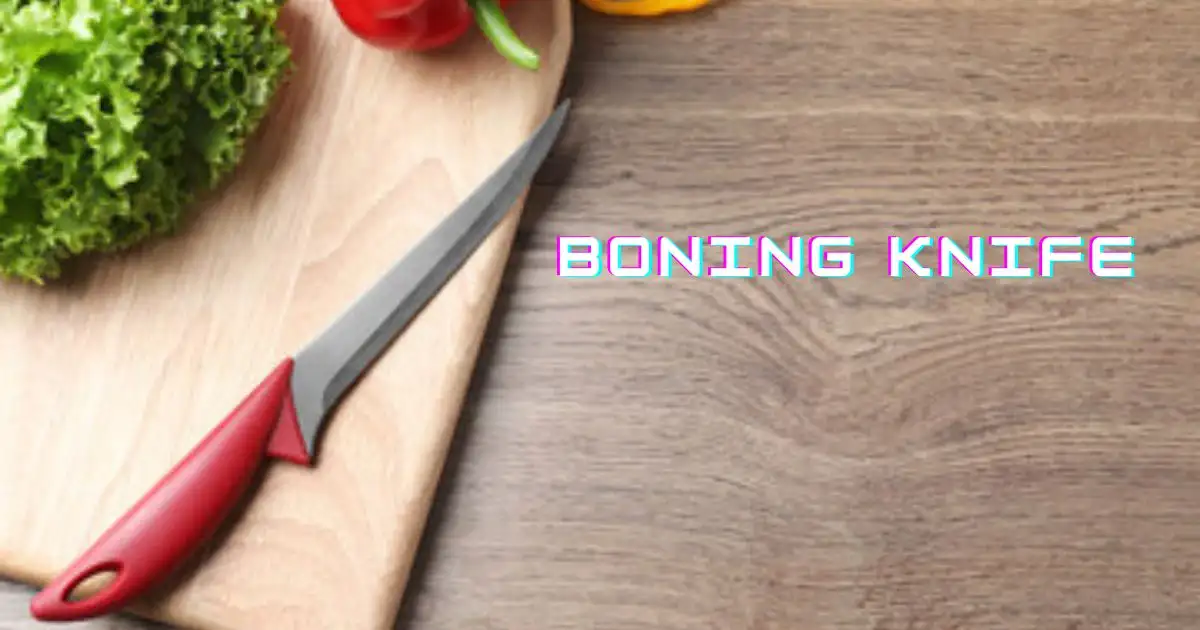“Securing Your Slice: A Guide to Fixing a Wobbly Pocket Knife Blade”
Table of Contents
ToggleIntroduction:
A pocket knife has more blades that fit the handle of the knife. A pocket knife is a portable tool that is convenient for everyone. Pocket knife blade sizes vary, and it is a folding tool for safety and can be easily stored. It is used in cutting,slicing,and general utility tasks. In this blog, we will discuss the tools and materials that are necessary to fix a loose pocket knife blade. A loose blade not only affects the knife’s functionality but can also pose safety risks if not addressed promptly. You can tighten your grip and get your pocket knife back to its best condition by knowing its parts, keeping the necessary tools on hand, and using a methodical process.
Exploring the Basic Components of a Pocket Knife:
Blade: The primary cutting component of the knife
Handle: The part you grip, housing the blade and other internal components.
Pivot Screw: The central screw that holds the blade in place and allows it to pivot
Liners: internal metal plates that add structural support to the handle.
Bolsters: metal fittings at the ends of the handle for additional strength.
B. How the Blade is Attached to the Handle:
Pivot Mechanism: Explaining the mechanics of the pivot that allows the blade to swing open and close
Locking Mechanisms: A brief overview of common mechanisms like liner locks, frame locks, and lock backs
Detent System: The mechanism that keeps the blade securely closed.
Common Reasons for a Loose pocket knife Blade:
Wear and tear: Over time, the constant opening and closing can lead to loosening.
Dirt and debris: accumulation of dirt, lint, or other particles affecting the pivot
Lack of Lubrication: Insufficient or dried-out lubrication causes friction and wear.
Loose Pivot Screw: The central screw may become loose due to usage or external factors.
Collect the necessary tools:
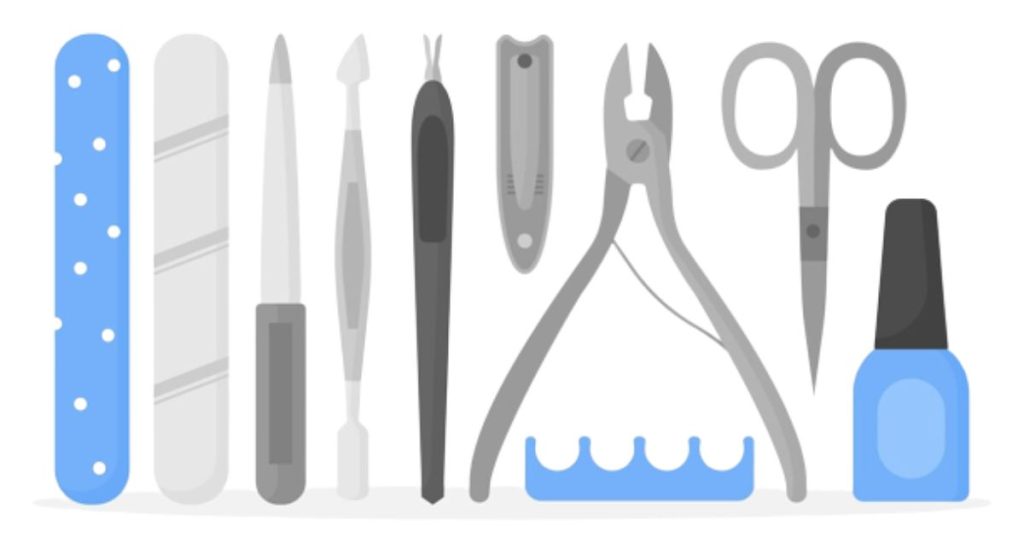
- Screwdriver Set:
- Torx Wrench:
- Pliers:
- Cleaning Brush:
- Lubricant:
- Cloth or Q-Tips:
- Rubbing Alcohol:
- Bench Block or Soft Surface:
- Safety Precautions:
- Work in a Well-Lit Area:
- Gloves:
- Eye Protection:
Recommended Materials for Lubrication and Tightening:
Knife-Specific Lubricant:
Ensure it’s designed for the type of knife you have.
Thread locker (optional):
For securing screws in place.
Microfiber Cloth:
For a final wipe-down after cleaning and lubricating
Before starting, gather everything you need to avoid interruptions during the process. Additionally, take appropriate safety measures to protect yourself and the knife components during the fix. Here are some important guides that can help you:
Factors to be considered to fix the loose pocket knife blade
A. Inspection:
Examine the knife:
Check for visible damage or irregularities.
Note any areas where the blade seems to be loose.
Identify specific areas.
Determine if the looseness is at the pivot, lock, or other components.
Wiggle the blade gently to pinpoint the source.
B. Disassembly (if required):
Safety First:
Ensure the knife is clean and free of debris.
Work on a bench block or soft surface to prevent scratches.
Remove the pivot screw.
Use the appropriate screwdriver or Torx wrench.
Keep track of the order of components as you disassemble.
C. Cleaning
Use a small brush or compressed air to clear the dirt.
Q-Tips and rubbing alcohol for detailed cleaning.
Clean Pivot Area:
Ensure the pivot area is free from old lubricants.
Wipe down liners, bolsters, and the blade.
D. Lubrication:
Choose the right lubricant.
Apply the right, high-quality knife lubricant, but the amount must be small.
Ensure it reaches the pivot and other moving parts.
Avoid Over-Lubricating:
A drop or two is usually sufficient.
Too much lubrication can attract debris.
E. Adjusting Tightness:
Use a screwdriver or Torx wrench.
Adjust gradually, testing the blade’s tightness as you go.
Find the Right Balance:
The blade should be secure but not overly tight.
Check for smooth opening and closing.
Additional Tips for Regular Cleanliness and Maintenance:
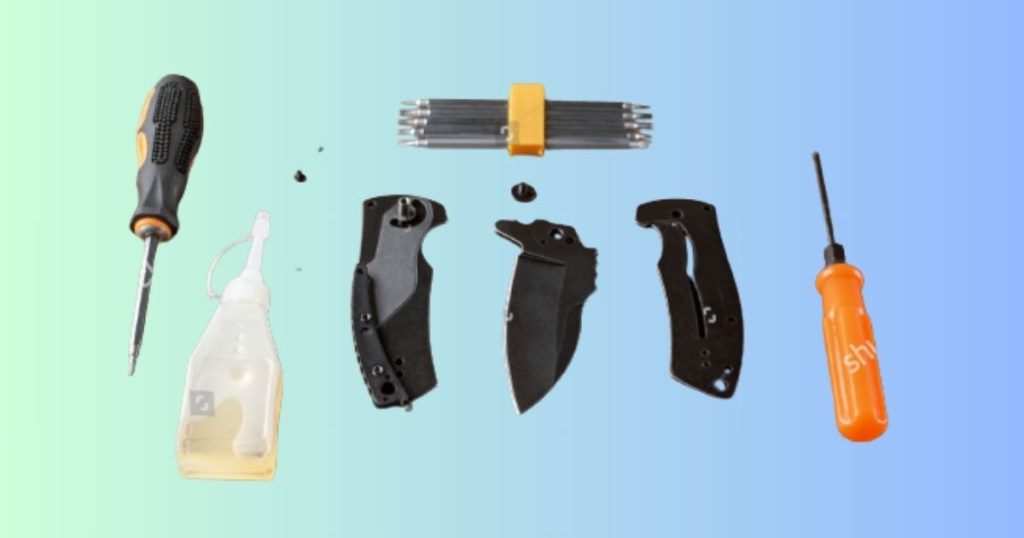
A. Regular Maintenance:
Establish a cleaning schedule.
Regularly clean and lubricate your pocket knife.
Address any looseness promptly to prevent further issues.
B. When to Seek Professional Help:
Persistent Issues:
If the blade continues to be loose despite your efforts,
Consider consulting a professional knife technician.
C. Other Considerations for Knife Cleaning:
1. Remove debris:
Begin by ensuring the knife is free of any loose dirt or debris.
Use a small brush or compressed air to dislodge and remove visible particles.
Pay particular attention to the pivot area, where debris can accumulate and contribute to blade looseness.
2. Disassemble for a Thorough Clean (If Necessary):
If your knife allows for safe disassembly, carefully take it apart.
This step provides better access to internal components for a more thorough cleaning.
Keep track of the order of components for the reassembly process.
4. Brush and Swab:
Use a small, soft brush to reach into crevices and corners, removing stubborn dirt.
Q-Tips dipped in rubbing alcohol can help clean hard-to-reach areas.
Pay attention to the pivot area and locking mechanism (if applicable).
5. Dry thoroughly.
Allow the components to air-dry completely.
Ensure there is no residual moisture, as water can accelerate the formation of rust.
Testing factors for the pocket knife blade:
- Gently open and close the blade multiple times to assess its movement.
- Confirm that the blade operates smoothly without any hitching or resistance.
- Ensure the blade remains securely in place without excessive play.
- Check for any wobbling or lateral movement, especially at different opening angles.
- If your knife features a locking mechanism, engage and disengage it several times.
- Verify that the locking mechanism securely holds the blade in the open position.
- Assess the overall stability of the knife.
- Confirm that all components are securely in place and there are no unexpected movements.
- Pay attention to the deployment of the blade.
- Ensure it opens smoothly and locks securely into place.
- Check the blade’s tightness at different opening angles.
- Confirm that the tightness remains consistent throughout the range of motion.
- Listen for any unusual sounds during blade movement.
- Clicking or grinding noises may indicate further adjustments are needed.
- Open the blade and hold the knife upside down.
- Confirm that the blade remains in the open position without any unintentional closure.
- Conduct controlled cutting tests to ensure the blade’s stability during use.
- Pay attention to any unexpected movements or changes in tightness.
Conclusion:
Maintaining a tight and reliable pocket knife blade is crucial for both safety and functionality. In this guide, we’ve walked through the steps to address a loose blade, from understanding the components to a systematic process of cleaning, lubricating, adjusting, and testing. As you conclude your journey to fixing a loose pocket knife blade, consider the following key points: Regularly inspect your pocket knife for any signs of wear, damage, or looseness.Addressing a loose blade promptly enhances both user safety and the knife’s effectiveness Cleaning, lubricating, and adjusting the tightness are integral parts of knife maintenance.Regularly incorporate these practices to keep your pocket knife in optimal condition.Armed with the right tools and knowledge, many loose-blade issues can be resolved at home.Follow the step-by-step guide with patience and precision for effective results.If issues persist or if you are uncomfortable with DIY repairs, consider seeking professional help.Professional knife technicians can diagnose and address more complex problems.Integrate regular checks into your routine to catch potential issues early.A well-maintained pocket knife is a reliable companion in various situations.
(FAQs):
1: Why is my pocket knife blade loose?
A: Pocket knife blades can become loose due to wear and tear, lack of proper maintenance, accumulation of debris in the pivot area, or a loosened pivot screw.
2: Can I fix a loose pocket knife blade at home?
A: Yes, many cases of a loose blade can be fixed at home. With the right tools, cleaning, lubrication, and careful adjustment of the pivot screw, you can often restore the blade’s tightness.
3: What tools do I need to fix a loose pocket knife blade?
A: You’ll need a screwdriver or Torx wrench (depending on the screw type), pliers, a cleaning brush, lubricant, rubbing alcohol, a soft cloth, and a bench block or soft surface for disassembly.
4: How often should I clean and maintain my pocket knife?
A: Regular maintenance is essential. Depending on usage, aim to clean and lubricate your pocket knife every few months.
5: Is it normal for a pocket knife blade to have a slight amount of play?
A: Some knives may have a minimal amount of play for functional reasons. However, excessive play or wobbling is a sign of a problem and should be addressed to maintain safe and effective use.
6: What lubricant should I use for my pocket knife?
A: Choose a high-quality knife-specific lubricant. Look for one with corrosion protection, suitable viscosity, and is designed for the specific type of knife you own.
7:should I lubricate a pocket knife with wd-40 ?
A: No, it is not advised to lubricate a pocket knife with WD-40 for more than a long period of time It is not reliable for long-lasting operation because it is a degreaser. Instead of this knife,e you must try a special knife lubricant.


